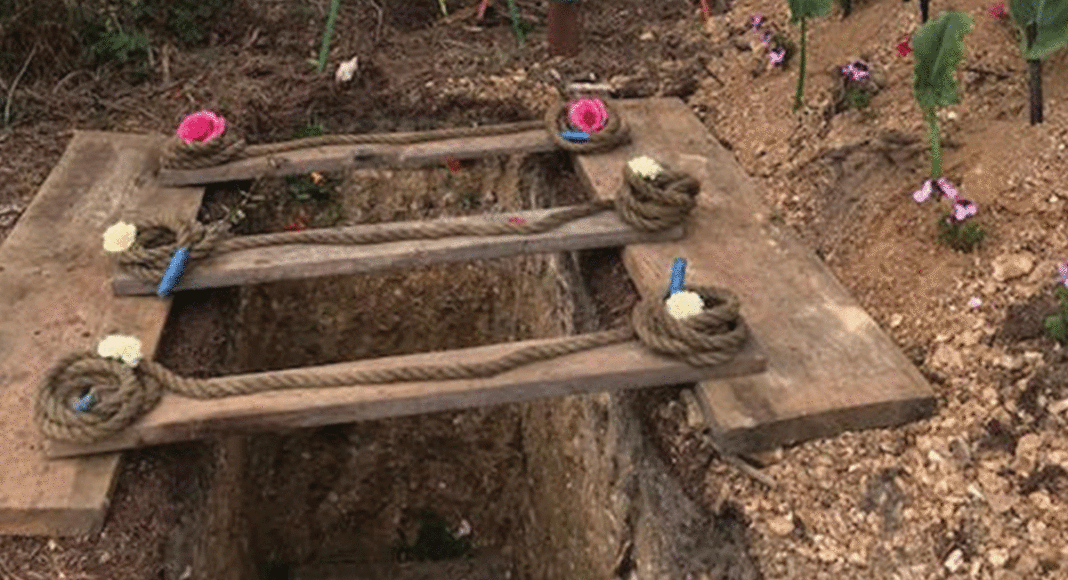When my husband Jim died in 2003, it was an obvious choice to scatter his ashes at the Santa Cruz Mountains Estate Vineyard we co-owned with our winery partner.
Benito & Azzaro’s Pacific Garden Chapel handled our funeral services and arranged for his cremation. Soon after, to protect my family from future cost increases, I locked in my own funeral plan there by pre-paying at current rates.
It was my intention to be cremated—that is, until I read a 2017 GT article by Maria Grusauskas about how “Eco-Friendly Burial Practices May Make Death Greener.” I’d been dedicated to organic, chemical-free living since the ‘70s, so a green burial plan got my attention immediately.
Though environmental impacts aren’t often the focal point of funerals, American burials put 1.6 million tons of reinforced concrete, 20 million feet of wood, 17,000 tons of copper and bronze, and 64,500 tons of steel into the ground each year.
But what is a green burial? The Green Burial Council, an environmental certification organization setting the standard in North America, states that a burial is green only when it furthers legitimate environmental and social aims, such as protecting worker health, reducing carbon emissions, conserving natural resources, and preserving habitat.
Levels of environmental benefits are detailed in the organization’s standards and eco-rating system. Soquel Cemetery is a hybrid burial ground, or a conventional cemetery allowing green burial. Purissima Cemetery in Half Moon Bay rates as a natural burial ground.
The green rating system excludes concrete vaults and the use of embalming fluids in the body. Only caskets made of untreated pine or wicker, markers made of natural field stones, and linen or cotton shrouds can be used for the burial.
Costs for green burial are lower because of the restrictions on caskets, embalming and elaborate headstones. Plots at Purissima run from $3,000 to $5,000, while conventional burials can cost up to $12,000, plus $6,000 or more for extra services.
Ed Bixby, owner of Purissima Cemetery since 2017, has been restoring the dense, overgrown grounds to their original natural beauty. The 5.5-acre property along Purissima Creek is surrounded by massive cedar and pine trees with sweeping views of the Pacific Ocean. His term, “cremation conversion,” refers to individuals who originally planned for cremation but after visiting the grounds decided on a natural burial.
At the invitation of Patricia Kimie, pre-arrangement counselor and advocate for green burial at The Benito & Azzaro Chapel, I joined her for the idyllic drive to Half Moon Bay to visit Purissima. After meeting Bixby and touring the lush grounds, I felt deeply inspired to consider a cremation conversion of my own.
Bixby says that religious and ethnic groups often ask for their own private section, but he declines. “We’re all from the same earth; there’s no need for division now,” he says.
When he acquired his first cemetery in New Jersey after his brother’s burial, Bixby asked the state to fund a clean-up of the unkempt grounds. The response was that the only way to raise money was to sell plots. He became certified with the sole intention of raising enough money to clean it up. After witnessing his first green burial, he says, “I saw the effect it had on the family and got a new passion for what I was doing.” Then he began getting natural burial requests from California and a search led him to Purissima.
According to historian and author Mitch Postel, the cemetery is all that’s left of a town in the 1860s that had a saloon, hotel, schoolhouse, store, livery stable and post office. He writes in San Mateo County, a Sesquicentennial History that, “The town was founded by immigrants who thought Purissima would become the coast’s leading community. However, Half Moon Bay’s better location on the road to San Mateo gave it the advantage, and Purissima slowly disappeared.” (Wikipedia is the only source that mentions a change from the original spelling of Purisima, with one ‘s,’ stating that the change comes from local Portuguese influence taken from Puríssima Conceicão.)
While I hadn’t even heard the term green burial until two years ago, a conversation with my neighbor, Margaret Hammond Larson, made the concept real. I learned that when her daughter died five years ago, she and her son chose a beautiful spot in Soquel Cemetery designated as green.
As for how my four grown kids will react, I’m sure they’ll honor my wishes after they see the ocean-view plots at Purissima. With the blessing of my Creator, I visualize this “blue-minded”—as Wallace J. Nichols might put it—woman’s soul uniting in glorious harmony with the brilliant blue sea.
Purissima Cemetery, 1165 Verde Rd., Half Moon Bay. 609-628-2297.
Soquel Cemetery, 550 Old San Jose Rd., Soquel. 464-8732.















What are the kinds of tree
I belleve they are mostly evergreens.
I have included green burial (composting) in my Letter of Last Instructions in my Living Trust papers. How do I make the arrangements at Purissima Cemetery?
There’s plenty of time, as I’m in very good health and don’t expect to die for many years. I’m 82.
Call Purissima Cemetery, 609-628-2297
1165 Verde Rd., Half Moon Bay.
I am very interested in total body green burial (not cremation) for myself & my husband – we are in our 70’s & live in Southern California….